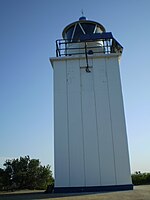National Heritage List (Australia)

The Australian National Heritage List or National Heritage List (NHL) is a heritage register, a list of national heritage places deemed to be of outstanding heritage significance to Australia, established in 2003. The list includes natural and historic places, including those of cultural significance to Indigenous Australians such as Aboriginal Australian sacred sites. Having been assessed against a set list of criteria, once a place is put on the National Heritage List, the provisions of the Environment Protection and Biodiversity Conservation Act 1999 (EPBC Act) apply. All places on this list can be found on the online Australian Heritage Database, along with other places on other Australian and world heritage listings.
Excerpt from the Wikipedia article National Heritage List (Australia) (License: CC BY-SA 3.0, Authors, Images).National Heritage List (Australia)
Abbe Receveur Place, Sydney Little Bay
Geographical coordinates (GPS) Address Nearby Places Show on map
Geographical coordinates (GPS)
| Latitude | Longitude |
|---|---|
| N -34.020555555556 ° | E 151.22472222222 ° |
Address
Kamay Botany Bay National Park (Botany Bay National Park)
Abbe Receveur Place
2036 Sydney, Little Bay
New South Wales, Australia
Open on Google Maps








